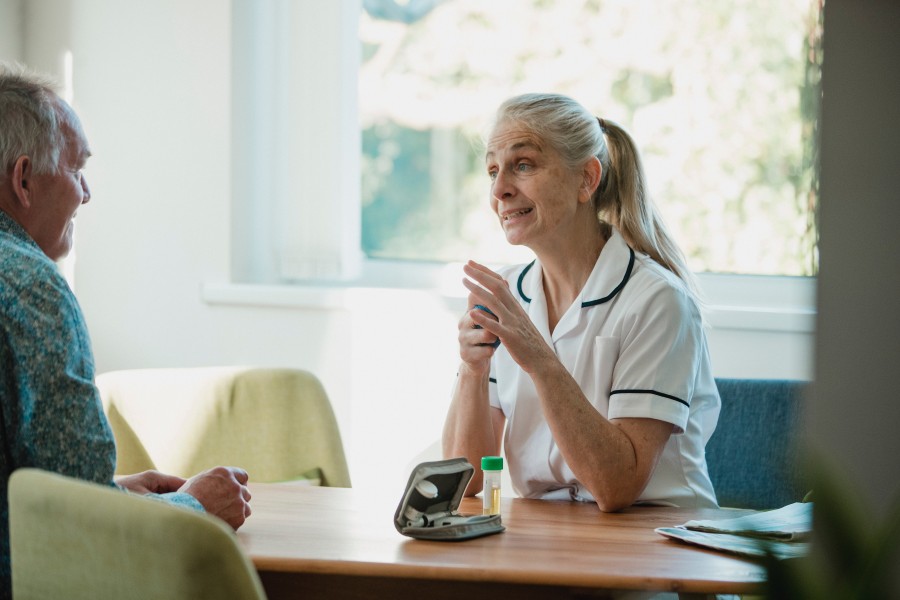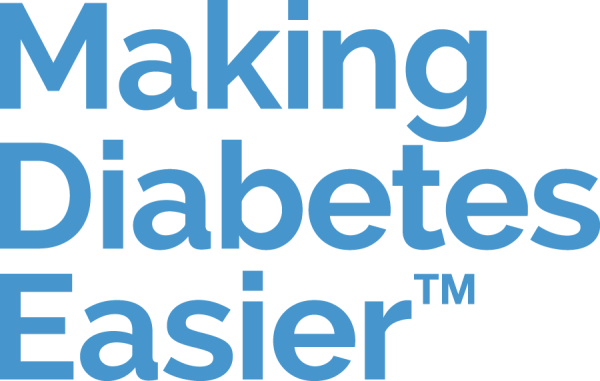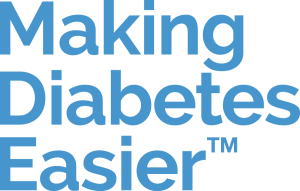Hyperglycaemia: symptoms & causes

If you have been newly diagnosed with diabetes, there can be a lot of new terminology to learn.
This article is about hyperglycaemia, which is the medical term for high levels of blood glucose [1]. After reading this, you should hopefully have a clearer idea of what hyperglycaemia is, how it is caused, and some of the potential complications it can lead to.
What is hyperglycaemia?
Hyperglycaemia is the term for high levels of glucose (sugar) in the blood [1]. There are a number of causes of hyperglycaemia [2], including diabetes [1].
The level of glucose in your blood is regulated by the hormone insulin, which is secreted by the pancreas [1]. Diabetes occurs when there are raised levels of blood glucose because the body either cannot produce any or enough insulin, or cannot use insulin effectively [1].
If left untreated over a long time, hyperglycaemia can potentially lead to a range of complications [1]. However, the good news is that if you manage diabetes carefully, avoiding long-term hyperglycaemia, these complications may be prevented or delayed [1].
Depending on which guidelines you read, there are several different ways to define hyperglycaemia.
What causes hyperglycaemia?
There are a number of different causes of hyperglycaemia [2].
In type 1 diabetes, your body’s immune system attacks the insulin-producing cells in the pancreas [1, 2]. As a result, none — or very little — insulin is produced, with a relative or absolute deficiency of insulin [1]. The lack of insulin means that glucose cannot be transported from the blood into your cells (to be converted into energy), and the glucose levels in your blood become raised [1].
In type 2 diabetes, hyperglycaemia is the result of your body not producing enough insulin, as well as not being able to respond fully to insulin (known as insulin resistance) [1].
What are other causes of hyperglycaemia other than diabetes?
There is a wide range of other conditions and medications that can cause hyperglycaemia too, including [2]:
- Damage to the pancreas, such as from chronic pancreatitis or pancreatic cancer
- Hormonal disorders, such as Cushing syndrome
- Use of medications — for example, steroids
- Being severely unwell — either postoperatively or in people who are critically ill
- Gestational diabetes, which is primarily due to decreased insulin sensitivity in pregnacy
- Total parenteral nutrition (TPN) and dextrose infusion (where nutrients are introduced into the veins with a catheter)
Causes of hyperglycaemia in diabetes
High blood glucose can occur in diabetes for a number of reasons.
One possibility is that you haven’t taken enough insulin [3]. This can occur if you forget to take your bolus dose (single dose of insulin) after a meal, if you have calculated your dose incorrectly, or if you took too little of the dose [3].
Another cause of hyperglycaemia can be changes in your food intake [3]. This could happen if your meal has more fat or carbohydrates than you thought, or if you ate more of the meal than you had calculated your insulin dose for [3].
What is going on in your life can also have an effect on your diabetes management, with some situations increasing the chance of having hyperglycaemia [3]. These can include being under stress, eating outside the home, being busy and feeling tired [3].
Hyperglycaemia may also occur during intense anaerobic exercise if you have diabetes [4]. Some factors that might increase your chance of having high blood glucose while exercising can include reducing your dose of insulin to avoid hypoglycaemia, eating too many carbs when exercising, and high-intensity ‘anaerobic’ exercise [4].
Risk factors for hyperglycaemia
Hyperglycaemia is common in people who have diabetes [3]. In one study, 61.9% of people with type 1 and type 2 diabetes reported having at least one episode of post-prandial hyperglycaemia (hyperglycaemia after a meal) in the past week [3].
Diabetic hyper symptoms & signs

When your blood sugar levels are slightly higher than normal, you will not usually experience any symptoms.
The most common symptoms of hyperglycaemia (and diabetes) include [1]:
- Abnormal thirst and a dry mouth
- Frequent urination, especially at night (including bedwetting)
- Lack of energy, tiredness and lethargy
- Hunger
- Blurred vision
- Sudden weight loss
- Slow-healing wounds
- Recurring infections
Early warning signs of hyperglycaemia
If you have diabetes, you will probably want to detect when you have hyperglycaemia as early as possible.
One study asked people with diabetes how they knew they were having a hyperglycaemic episode [3]. Most commonly, hyperglycaemia was discovered by blood glucose testing [3] —
The next most common way respondents knew they were having hyperglycaemia was described as they ‘just didn’t feel right’ [3].
Participants also reported frequently passing urine as a key indicator [3].
Severe symptoms of high blood glucose
The most common symptoms of hyperglycaemia are [2]:
- Passing urine more frequently than usual (polyuria)
- Drinking more liquids than normal (polydipsia)
A less immediate symptom is losing weight unexpectedly [2].
If high blood glucose isn’t treated it can lead to worsening symptoms which may require treatment. These can include [2]:
- Lethargy
- Changes to your mental state
- Nervous system symptoms
In really severe cases, the person experiencing severe hyperglycaemia may progress to a comatose state [2].
Complications of hyperglycaemia
If you leave hyperglycaemia untreated it can lead to a number of complications — both short-term and long-term [2, 5, 6].
Hyperglycaemic hyperosmolar state (HHS)
Hyperglycaemic hyperosmolar state (HHS) is classed as a diabetic emergency [5]. It is more common in adults and the elderly, and usually comes on gradually over days to weeks [5].
The features of HHS are [5]:
- Hyperglycaemia — raised blood glucose
- Hyperosmolarity — blood is more concentrated than normal
- Mental state changes — changes to your behaviour
If you have HHS, you are often very dehydrated [5]. HHS is treated in hospital with careful monitoring, intravenous (IV) fluids to correct the dehydration, and insulin to lower blood glucose [5].
Diabetic ketoacidosis (DKA)
Diabetic ketoacidosis is a serious condition usually caused by reduced insulin levels in your blood, decreased glucose use, and increased glucose production [6].
The key features of DKA are [6]:
- Hyperglycaemia — high blood glucose levels
- Acidosis — blood being too acidic
- Ketosis — the presence of ketones in the blood
DKA can develop quite quickly, sometimes in less than 24 hours [6].
The symptoms of DKA usually include:
- Nausea and vomiting [2]
- Abdominal pain [2]
- Passing more urine than usual (polyuria) [6]
- Drinking much more than usual (polydipsia) [6]
- Eating much more than usual (polyphagia) [6]
- Weakness [6]
- Rapid, shallow breathing [2]
Some people may be less alert [6]. This can vary from confusion to a coma in extremely severe cases [6].
DKA is a medical emergency [5]. If you think you may have DKA you should go to hospital where you can be assessed and treated.
If you have very early or mild DKA, you could be treated in hospital with fluids taken orally and then sent home [6]. More commonly, you will need to be admitted to hospital where your treatment would involve intravenous fluids, an insulin drip and replacement of some of the electrolytes in your blood [6].
In cases of severe DKA, a person might need to be admitted to the intensive care unit for treatment and monitoring [6].
Long-term complications of hyperglycaemia
If left untreated, high blood glucose over a long time can potentially cause damage to many different parts of your body — causing problems with your eyes, kidneys, nerves, heart, and blood vessels [2].
The damage from hyperglycaemia leads to conditions involving [1]:
- The heart and blood vessels, increasing the risks of heart attacks, angina and blood vessel problems
- The eyes, potentially causing decreased vision and blindness from damage to the small blood vessels in the eye
- The kidneys, leading to chronic kidney disease
- The nerves, with damage leading to abnormal sensations and numbness, most commonly in the feet
While this list can seem daunting, it is important to know with good care these complications are preventable.,. Your healthcare team/diabetes care team will screen you regularly for any complications associated with high blood glucose [1]. If there are any signs that a complication may develop, they can help you make changes that can prevent or treat the problem [1].
Managing hyperglycaemia effectively and efficiently can reduce your risk of developing these complications and help prevent them [1, 2].
Hyperglycaemia, or high blood glucose, can be caused by a range of conditions including diabetes [1, 2]. It can lead to serious short-term complications, including diabetic ketoacidosis and hyperglycaemic hyperosmolar state [5, 6].
In the longer term, if not managed, hyperglycaemia can lead to complications involving the eyes, heart, kidneys, nerves and blood vessels [2].
Managing your blood glucose and the potential complications of your diabetes is one of the things that your healthcare team will help you with [1]. If you have any questions about your blood glucose levels, or if you are concerned about your risk of complications, they will work with you to answer them.
If you want to find out how to manage high blood glucose, including how to treat hyperglycaemia in an emergency, our article on hyperglycaemia treatment will help.
Sources
- International Diabetes Federation (2017). IDF diabetes atlas (8th Ed).
- Mouri M, Badireddy, M. Hyperglycaemia. StatPearls. Treasure Island (FL): StatPearls Publishing; 2022 Jan. Available from: https://www.ncbi.nlm.nih.gov/books/NBK430900/
- Brod, M., et al. Understanding Post-Prandial Hyperglycemia in Patients with Type 1 and Type 2 Diabetes: A Web-based Survey in Germany, the UK, and USA. Diabetes Ther. 2016; 7: 335–348. doi: 10.1007/s13300-016-0175-x
- Lumb, A et al. Diabetes management for intense exercise, Current Opinion in Endocrinology, Diabetes and Obesity. 2009; 16(2):150-155. doi: 10.1097/MED.0b013e328328f449
- Dhatariya, K. Blood Ketones: Measurement, Interpretation, Limitations, and Utility in the Management of Diabetic Ketoacidosis. The review of diabetic studies. 2016;13(4):217-225. doi:10.1900/RDS.2016.13.217.
- Trachtenbarg, D. E. Diabetic Ketoacidosis. American Family Physician; 2005, 71(9): 1705-1714.



